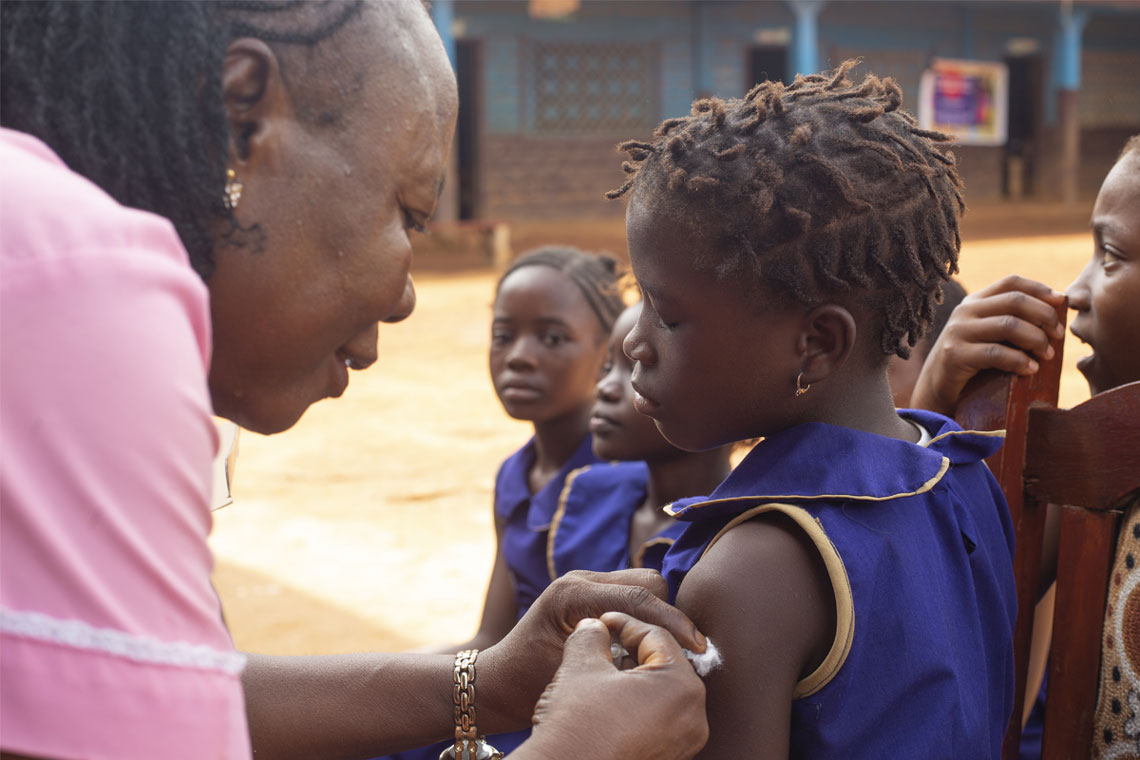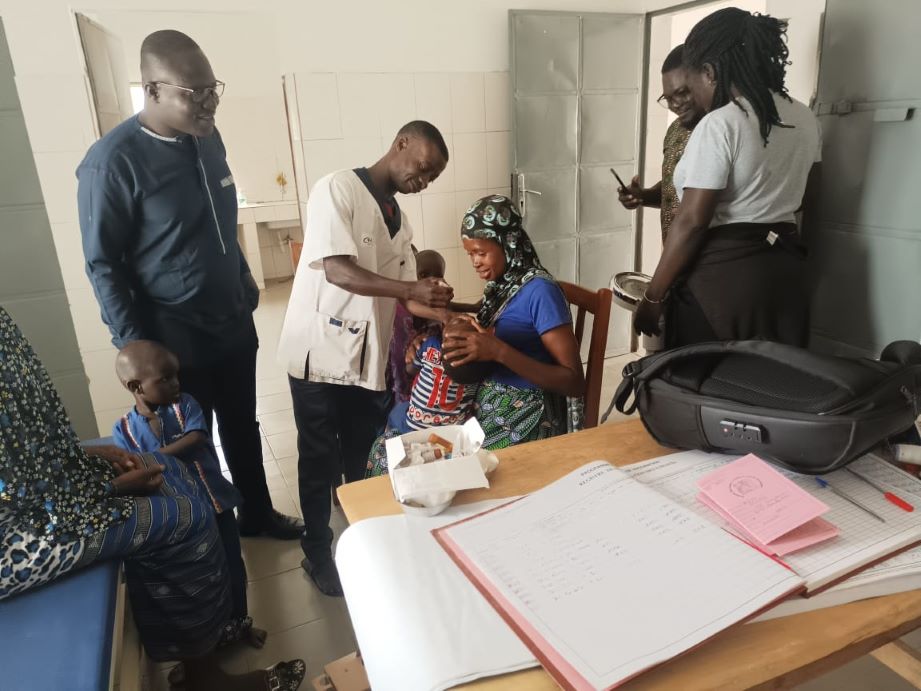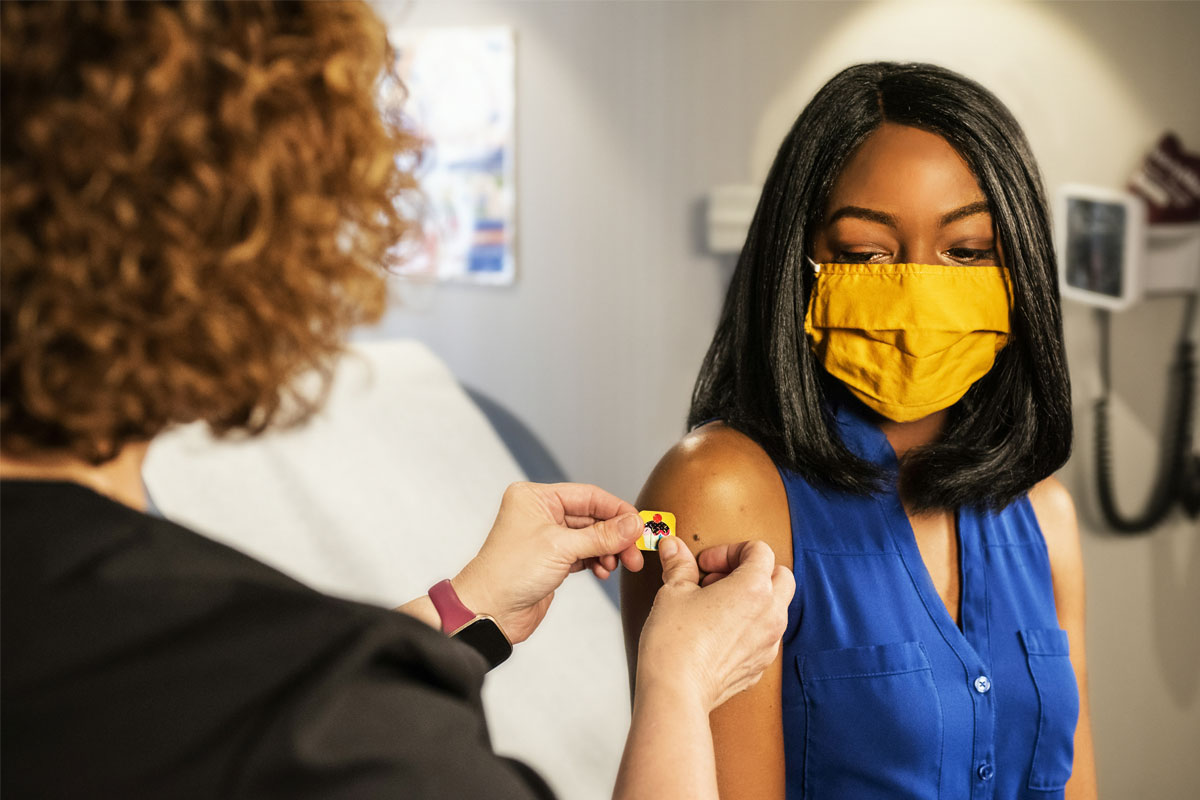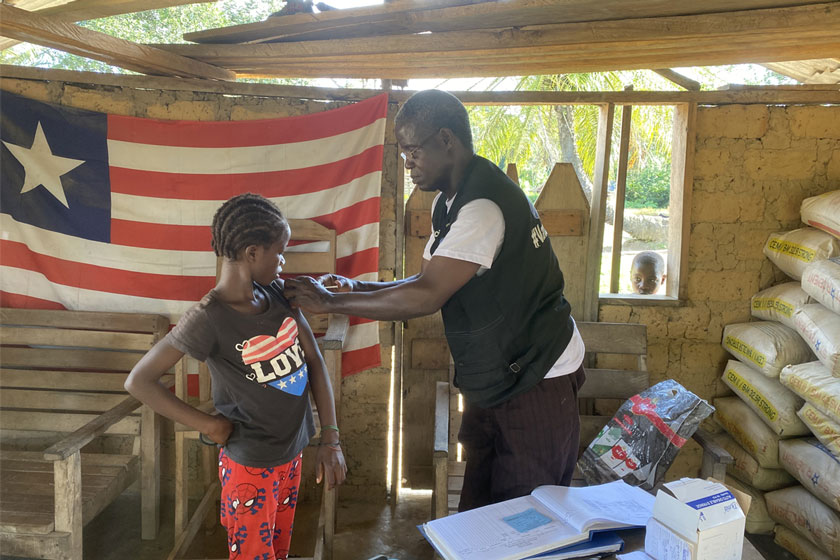Reduce waste, boost coverage: Togo adopts smaller five-dose vials for measles-rubella vaccination
In October, Togo began swapping out the more common ten-dose vials of measles-rubella vaccine with smaller five-dose vials, which research has shown is a more efficient presentation in many contexts.
- 3 December 2024
- 4 min read
- by Nephthali Messanh Ledy
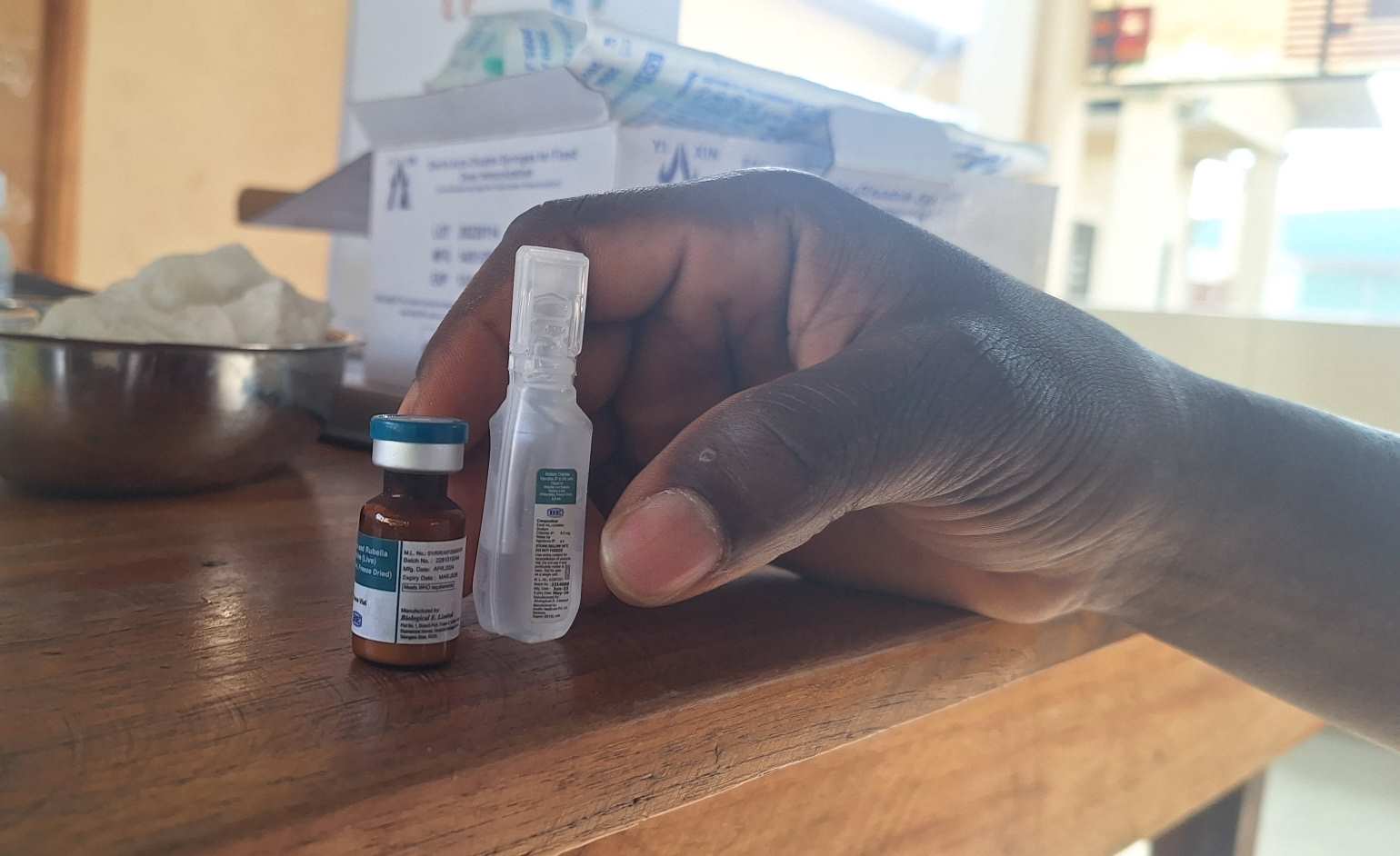
On a Friday in mid-November, a vaccination session is underway at the Kanyikopé health centre, a small facility located east of Lomé. At 8:30 in the morning, the turnout is not yet at its peak, which is typical enough, say the regular observers. One change does stand out to health workers, however: since October, five-dose vials of measles-rubella vaccine have replaced the ten-dose vials at this centre.
"We're now using these new vials introduced by the country's health authorities. They've replaced the ten-dose vials we used before," says Eugène Aguidi, one of the vaccinators at the centre.
"Health workers were often reluctant to open a ten-dose vial when only two or three children were present. They would ask themselves, ‘Is it worth opening a vial to vaccinate three children and waste seven or eight doses?’ This hesitation led to missed opportunities"
– Dr Boko Amévégbé, Director of the National Essential Programme on Immunization (EPI)
The new vial is noticeably smaller than the previous one, explains Aguidi. Other than that, it's pretty similar to its predecessor: it's also equipped with a vaccine vial monitor (VVM), a small indicator that changes colour if the vial has been exposed to excessive heat, allowing health care workers to ensure the vaccine's integrity, and also contains vaccine in powdered form, to which diluent is added. "Each vial is used to vaccinate five children. Once opened, it must be used within six hours. After that, it can no longer be used for vaccinations," the vaccinator clarifies.
Avoiding missed vaccination opportunities
"This shift is a response to the challenges of using ten-dose vials," explains Dr Boko Amévégbé, Director of the National Essential Programme on Immunization (EPI). "Health workers were often reluctant to open a ten-dose vial when only two or three children were present. They would ask themselves, 'Is it worth opening a vial to vaccinate three children and waste seven or eight doses?' This hesitation led to missed opportunities. Sometimes mothers, grandparents, or guardians would bring two or three children to be vaccinated, only to be told to return later. Unfortunately, many never came back."

Credit : Nephthali Ledy
Charles Binewai, an IT professional, experienced this issue firsthand with his son. "Our vaccination appointment was postponed more than twice at one health centre. I was told they needed at least ten people to open a vial. The appointment was rescheduled three or four times, and in the end, I had to find another centre," he recalls. "I thought, if my baby's vaccination had to be delayed because there weren't enough people, it could have serious consequences for their health."
Have you read?
He added, "In my case, the vaccination didn't happen immediately. I was asked to come back another day for the same reason. Eventually, it was on a Friday that I managed to get my baby vaccinated, as the centre had finally scheduled enough patients. Only then was the vaccination completed."
Hoped-for changes
According to the Director of the EPI, this change is expected to significantly boost the measles-rubella vaccination coverage in Togo, a country that faced measles epidemics between 2022 and 2024, affecting nearly all districts and resulting in around 1,500 suspected cases annually, mostly among children aged 6 months to 15 years. "From now on, if there are just one or two children needing the vaccine, they must be vaccinated immediately, instead of waiting for a larger group to open the vial," he explains.
"The primary expected outcome is an increase in vaccination coverage for both the first and second doses. We also aim to reduce the gap between the first and second doses, helping to decrease the drop-out rate. The five-dose vial should also help cut vaccine losses and more effectively combat this preventable disease.”
Eugène Ayao Aguidi, training participant
Before the switch to five-dose vials, health workers were trained through a two-step process. First, district and regional managers were trained, and then they trained the vaccinators. The training addressed the current measles and rubella epidemiology, the existing vaccination coverage, and the anticipated benefits of the change.
"The primary expected outcome is an increase in vaccination coverage for both the first and second doses," explains Eugène Ayao Aguidi, who participated in the training. "We also aim to reduce the gap between the first and second doses, helping to decrease the drop-out rate. The five-dose vial should also help cut vaccine losses and more effectively combat this preventable disease." He further advocates for expanding this approach to other vaccines, such as BCG, yellow fever, meningitis and more.
This article was translated from the original French. To view the original click here
More from Nephthali Messanh Ledy
Recommended for you
